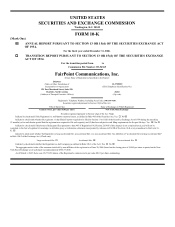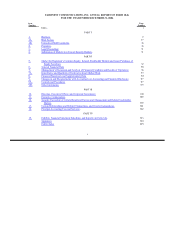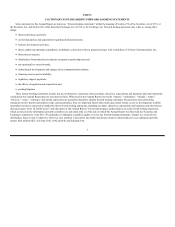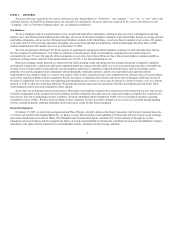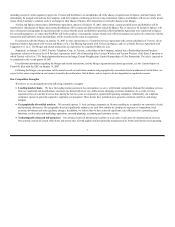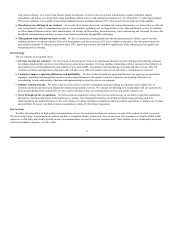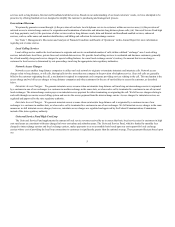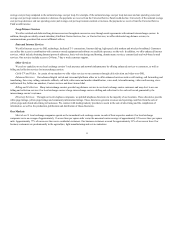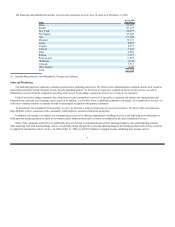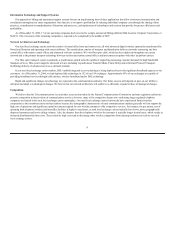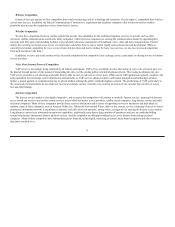FairPoint Communications 2006 Annual Report Download - page 9
Download and view the complete annual report
Please find page 9 of the 2006 FairPoint Communications annual report below. You can navigate through the pages in the report by either clicking on the pages listed below, or by using the keyword search tool below to find specific information within the annual report.
The following chart identifies the number of access line equivalents in each of our 18 states as of December 31, 2006:
Maine 68,163
Florida 56,127
New York 52,877
Washington 47,268
Ohio 15,268
Missouri 15,133
Illinois 8,257
Virginia 8,321
Vermont 7,426
Idaho 6,860
Kansas 6,935
Pennsylvania 6,572
Oklahoma 4,124
Colorado 3,711
Other States(1) 4,108
Total: 311,150
(1) Includes Massachusetts, New Hampshire, Georgia and Alabama.
Our marketing approach emphasizes customer-oriented sales, marketing and service. We believe most communications companies devote their resources
and attention primarily toward customers in more densely populated markets. To the extent we experience competition for any of our services, we seek to
differentiate ourselves from the competitors providing such services by providing a superior level of service to each of our customers.
Each of our local exchange companies has a long history in the communities it serves. It is our policy to maintain and enhance the strong identity and
reputation that each rural local exchange carrier enjoys in its markets, as we believe this is a significant competitive advantage. As we market new services, we
will seek to continue to utilize our identity in order to attain higher recognition with potential customers.
To demonstrate our commitment to the markets we serve, we maintain a strong local presence in our service territories. We believe that a local presence
helps facilitate a direct connection to the community, which improves customer satisfaction and loyalty.
In addition, our strategy is to enhance our communications services by offering comprehensive bundling of services and deploying new technologies to
build upon the strong reputation we enjoy in our markets and to further promote rural economic development in the rural communities we serve.
Many of the companies acquired by us traditionally have not devoted a substantial amount of their operating budget to sales and marketing activities.
After acquiring such rural local exchange carriers, we typically change this practice to provide additional support for existing products and services as well as
to support the introduction of new services. As of December 31, 2006, we had 255 employees engaged in sales, marketing and customer service.
7

